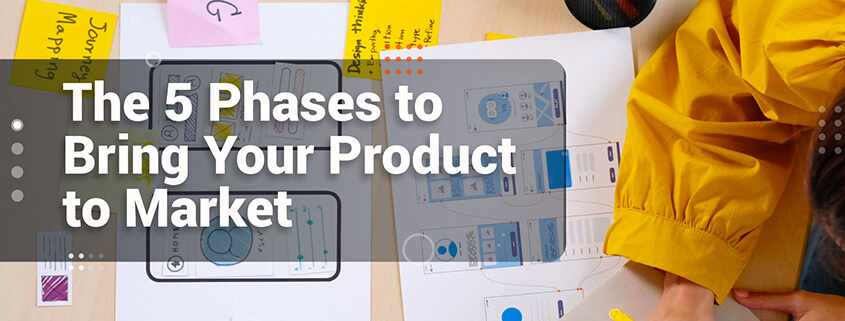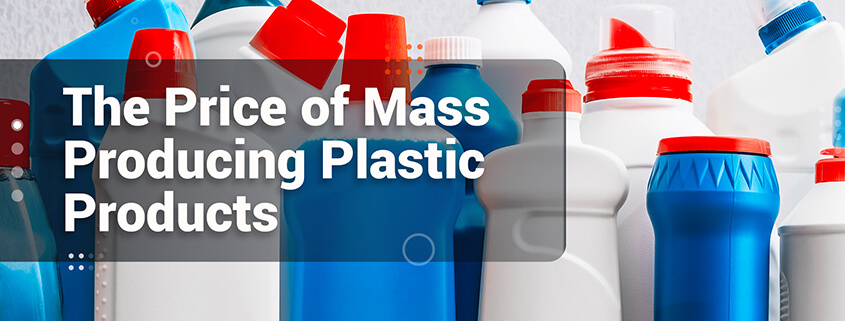If you’re an entrepreneur wondering about the product design process, your first question is probably how long does it take? There are a lot of steps between coming up with an idea and actually selling your product. After all, you need to make sales if you hope to get your money back.
Taking your product to market is exciting, but too often many of us want to start designing it right away. That’s not where the journey actually starts and we’ll explain why.
Phase 1: Research & Planning
Before you can begin the design phase of your product, you need to do a marketing report. This is a collection of data from different sources that will help you decide if the product idea is something worth pursuing.
Here are just a few factors you’ll consider before knowing if you have a good idea.
Competition
Is your product a completely new invention? Probably not. There’s nothing wrong with creating something that already exists, but you need to look at how many other companies out there are solving the same problem. In marketing, this is referred to as Points of Similarity.
If there the market is oversaturated, you will need to ensure your product has important points of difference that will make it stand out. Not surprisingly, this is referred to as Points of Differentiation in marketing. Looking at these different things helps you position your brand in the eyes of your consumer.
Target Audience
Who are you trying to sell your product to? Often people like to think their product is for everyone because that means you have a larger audience. This isn’t the best strategy because people won’t have a clear connection to your product. It’s better to have a focused target audience so you can market to them personally and speak the same language.
Would you sell pens to people who work in an office the same way you sell pens to an artist who works at home? Not likely. Different target audiences will have different needs and concerns. To be the most successful, you want to focus on who your audience is and how you will market to them.
Cost
How much will it cost to make your product? Let’s say you have an idea for an amazing new rain jacket that has a ton of features. You’re going to sell it to sailors who need the best gear for their watersports. It’s waterproof, lights up, has tons of pockets, and even a built-in life jacket! Well, that’s probably going to cost a lot more than a normal rain jacket. Is this justified enough that your target audience will buy it, or are they going to stick with what they already have for cheaper?
After looking at all the different variables of your product idea to see if it’s viable, you’ll know what to do. Sometimes, you won’t pass phase one. That’s alright. It’s better to scratch a bad idea before investing too much time and effort into it.
According to a study from Harvard, there are 30,000 new products designed and sold every year, but over 95% of them fail. That’s why product research is so important. Many people skip this step which can affect their success in the long run.
Approximate Timeline: 1 – 4 weeks
Phase 2: Prototyping
Everyone loves this step, and you might have even started putting things together in your garage if you’re an inventor. At this point, you’ve decided you want to pursue your idea and create a fantastic new product.
If you’re a small business owner, it might only be you and a small team creating the prototype. If you’re a large corporation, then there might be a whole team of developers and designers collaborating to create a new product.
In either scenario, you’ll create the first prototype and then some iterations of it until you finalize the product. Depending on the complexity of your product, it can take a short amount of time or a longer amount of time. If there are many electronic components, then you will likely add an extra 2-4 weeks to this stage. Of course, it can take a lot longer than that, the Dyson vacuums are an example of that.
James Dyson spent 15 years perfecting his vacuums until he was satisfied. He made over 5000 prototypes throughout the product design process. While that’s an extreme example of how long it takes to design something, it does happen.
At Ventrify, we try to do this step efficiently so you’re able to move forward quickly. Many companies can take a lot longer to do this step.
Approximate Timeline: 1 – 8 weeks
Phase 3: Sourcing & Logistics
At this stage, you have a solid prototype and you need to start contacting factories that will take your product and scale it up. If you’re working with a company like us, we’ll have plenty of contacts in the industry that we can recommend. We will always help you find the best factory to work with.
Then, they take your product and find out how to create it on a factory line. They’ll customize their machines to create your product. At this stage, you need to make sure you have the funds to pay the factories to create your product. If not, you aren’t going to get very far.
Often while this is going on in the background, your team is sorting out logistics and pricing as well. Many factories exist overseas in other countries. While it might seem simple to bring over your product in a shipping container and start selling it, it’s not that easy.
With tariffs, imports fees, and taxes on certain types of products, this can get complicated quickly. Even importing something as simple as shoes has its drawbacks. Because of that, you might decide to change certain aspects of your product. Many companies have found creative solutions to address issues like this.
Have you ever wondered why Converse shoes have a thin layer of felt on the bottom? It wears off after a few weeks outside and you can’t see it while walking, so the felt serves no practical or aesthetic function. Converse does this actually because of taxes. By adding a small amount of fabric, the sneakers are technically categorized as slippers. At some point in the design process, the brand discovered that slippers have lower import tax than shoes, so they added felt as a workaround.
Approximate Timeline: ~ 4 months
Phase 4: Production
After you’ve chosen a manufacturer to create your product, you have to wait for it to be produced. Now, you might think that a large project takes longer than a small project, but in our experience, the amount of product you order doesn’t affect the timeline as much as you think it does.
If you think about it from the manufacturer’s point of view, they have to change all their machines each time they create a new product. Regardless of producing 1000 or 10,000 copies of your product, the set-up time is likely to be the same.
For a larger project, the manufacturer might start on your project sooner to get it done quickly as they’ll make more money. For a smaller project, you might be added to the queue until a day when they have time to do small batches all at once.
This step can get messy for various reasons:
- Laws & Random Factors—This is often outside your control. With Covid-19 we have seen a lot of disruption in the shipping industry, not to mention the Suez Canal incident which cost an estimated $400 million per hour in goods delayed.
- Product Certification—You can’t sell your products until they pass certain testing and certification requirements which also add time to this step.
- Customs—Some countries are a lot stricter with their customs than other countries.
This phase can be quick, but it can also last longer than you expect. You also design the actual packaging for your product and optimize it to fit in the shipping containers when you’re bringing it over. While it’s at the factory, you will still have a lot to sort out.
Approximate Timeline: At least 6 weeks
Phase 5: Shipping & Distribution
At this point, the product has been designed, produced, and is landing in a warehouse. After it’s in the warehouse you’ll now be in contact with a distributor who will then get your product in stores or in your consumers’ hands directly.
Once you’ve made it this far you are going to focus on selling the product and marketing. At Ventrify, we’re no longer involved anymore. You’ll be working with your distributor to make sure shipping to your customers and buyers goes smoothly.
***
Now, to answer a complicated question, your total timeline from an idea to going to market can take anywhere from 3 to 16 months. Problems can arise as well lengthening the process even if you’ve planned it out from the start. There are a lot of decisions to be made which is why it takes so long.
While there are a lot more steps including marketing and selling your product, we wanted to focus on the product design process itself.
We believe in transparency and sharing practical advice to help entrepreneurs and inventors be successful. If you’re looking for more information on product design and development then make sure you’re subscribed to our newsletter.
About the Author
Ventrify is a product design and manufacturing firm that helps entrepreneurs bring product ideas from concept to market. We take in fledgling ideas and bring them through our iterative design process to create products our clients are proud of. Then, we work with manufacturing facilities worldwide to bring our clients the highest quality products at competitive prices.
If you have questions or want to discuss going remote, reach out to us through our Website, Facebook, or LinkedIn.
Article by Victoria Fraser



